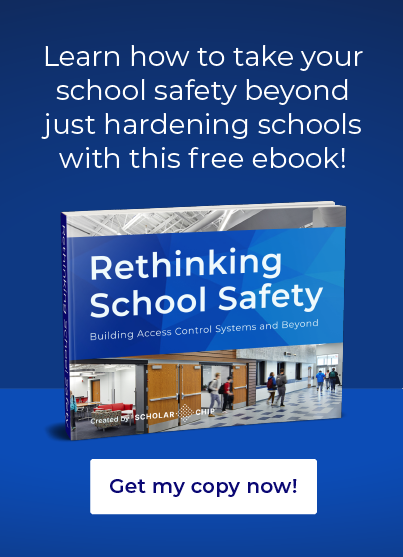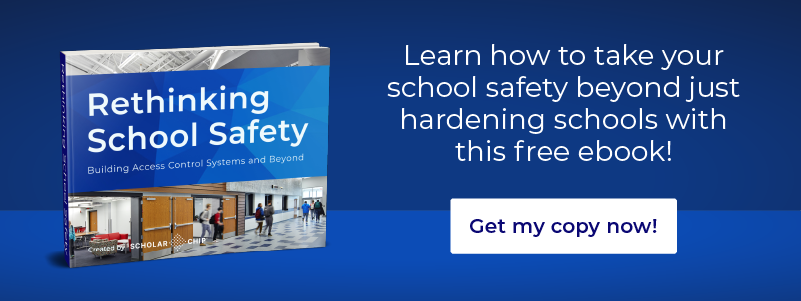School shootings, though statistically rare, happen far too often. Between media coverage and lockdown drills, increased visibility has resulted in students and parents finding themselves more concerned with safety on campus. When a school community expresses these concerns, they become a priority for superintendents.
New technology is available to reassure faculty, students, and parents alike that everyone will be safe in the classroom. But confidence in safety on campus can’t be guaranteed with just the push of a button—it starts with tackling the root of violence.
School superintendents can take preventative measures to address both internal and external threats by fostering a healthy school climate, using an anti-bullying course of action, establishing trust between students and school leaders, and finding the right technology to reinforce safety in their community. Here, we will dive into three different ways to increase safety on campus.
1. Promoting Social-Emotional Learning
Social and emotional learning, or SEL, refers to skills such as problem-solving, emotional intelligence, conflict resolution, teamwork, and decision-making that can help a student succeed in their personal life and school. These skills and behaviors help students effectively communicate with one another, celebrate their own and others’ successes, develop confidence, and feel included in their community. As a result, studies have found that students who participate in SEL programs showed an 11% increase in their academic achievement.
Along with other benefits, such as career-readiness, SEL is a major contributor to developing strong interpersonal skills in students. The ability to understand feelings and empathize prevents bullying and decreases the likelihood of disruptive and harmful behavior.
According to the NCES Indicators of School Crime and Safety: 2018 report, almost one in five students between the ages of twelve and eighteen reported being bullied in some capacity. The most common trait of violent offenders in schools is a sense of isolation, which can be the result of being bullied.
SEL helps foster a sense of safety on campus because students who feel more connected and engaged with their school community are more likely to develop healthy coping mechanisms and trust their peers and teachers. In other words, they’re more likely to say something if they see something.
2. Increasing Access to Reporting
Before most school attacks, students expressed concerns about the attacker but didn’t report their suspicions. Initiatives like Sandy Hook Promise have launched a “Say Something” campaign to empower students to speak up if they suspect a peer is possibly planning to hurt themselves or others. Increasing awareness about available resources can give students a platform to voice their concerns, even anonymously.
Other tactics, such as mental health counseling, give struggling students someone to turn to in stressful times. School-based mental health professionals are essential in identifying student needs and taking appropriate measures.
Schools can also partner with local mental health agencies to fill any staffing gaps and expand the reach of solutions and interventions offered to students in need. However, it’s important to keep in mind that any partnerships need to be carefully planned to comply with students’ rights and privacy.
Finally, Title IX ensures that a school has a designated coordinator to widely communicate grievance procedures in a way students can easily understand. The coordinator’s responsibilities are important to fostering safety on campus. Students of all ages can benefit from knowing there is a designated adult to turn to in reporting sexual harassment, violence, or discrimination.
3. Having an Emergency Response Plan Prepared
The presence of school safety technology, along with an emergency response plan, is essential to fostering community confidence in safety on campus. Technology can help address any external threats and give superintendents peace of mind that should an emergency occur, no school is left defenseless.
ScholarChip’s Smart ID Cards allow administrators to control building access by only allowing cleared people specific door access. This provides a strengthened lockdown plan. Any threats can be contained, and emergency response teams can be alerted.
Likewise, ScholarChip’s Visitor Management System lets school officials know who is in and out of the building in real time. Any at-risk visitor can be identified by scanning their government-issued ID and kept out when necessary. The Visitor Management System also tracks attendance, which reinforces student accountability and prevents truancy.
Luckily, preventative measures like SEL are often enough to keep schools safe and one of the most effective ways to increase community confidence in safety. However, it’s not always easy to implement in one or multiple schools.
ScholarChip’s ABE can help administrators and teachers manage at-risk students and promote better behavior. Data-driven reports not only allow teachers, principals, and counselors to flag students when needed, but they can also reward students for meeting certain requirements.
Find out how ScholarChip’s technology can ensure school safety, and schedule a call or demo today!


